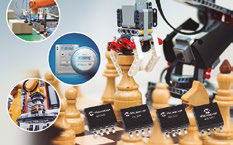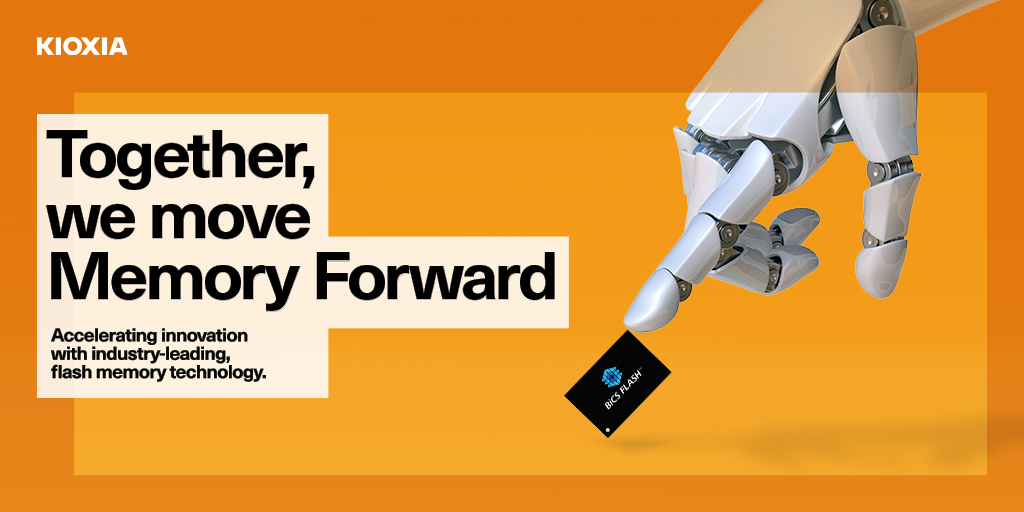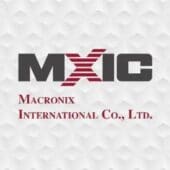The demand for non-volatile memories is largely due to the continuous development of mobile devices, in which memory is used with increasing capacity. These are mainly cameras, smartphones, tablets and cameras. The increasing demands of the market have forced the continuous development of the technology to produce non-volatile memories. The essence of non-volatile memory is to store data in the absence of a power source. However, the presence of power is required for data read and write operations. Both the Microchip company, as well as the Atmel company acquired by it, have extensive experience in the production of non-volatile memories. Its production process is carried out in its own silicon factories. Advanced testing procedures are used to maintain the highest level of quality. The producer's portfolio also includes memories with the AEC-Q100 qualification, which means they are approved for use in the automotive industry. It is also worth mentioning the EEmaintenance of all memory chips brought to the market in production.
EEPROM memories
EEPROM memories (Electrically Erasable Programmable Read Only Memory) belong to the group of non-volatile memories. Solutions of this type are most often used in applications that require the presence of reprogrammable ROM areas, especially in connection with the storage of system configuration data. Given the interface, EEPROMs can be serial or parallel. Serial memories (24xx series with I2C interface, 25xx series with SPI interface, 93xx series with Microwire interface) are most often produced in DIP and SOIC housings. Its capacity is usually tens of kB. Thanks to the serial interface and the small size and low power demand, such memories are often used to store data about the device's serial number or configuration and production data. There are also serial memories with a preprogrammed unique 48-bit or 64-bit address. which can be used as the MAC address of the device. Parallel memories are 28xx series.
Be aware of the fact that in terms of read functionality and bypasses it is compatible with the 27xxx series EPROM. The EEPROM memory application spectrum mainly includes its presence in industrial electronics: measurement devices and control systems, protection and alarm systems, sensors and battery chargers. You can also find them on IoT devices. EEPROM memory is also used in medical devices and in the automotive segment. EEPROM memory is also not without consumer electronics, that is, computer hardware, consumer electronics, and household appliances. Microchip's support in the production of EEPROM memory chips manufactured with the oldest technology – 1.2μm – 0.7-0.5- 4.4-0.25 – 0.18-0 13um – plays an important role in ensuring the continuity of equipment production. The development direction of EEPROM memories mainly includes the reduction of power demand and the introduction of the service of new interfaces. It is worth noting here the UNI/O asynchronous bus developed by Microchip in 2008 (11xx series). It is based on a bidirectional SCIO (Single Connection I/O) data line, providing a total of 3 outputs that allow the use of SOT23 and TO92 cabinets. The latest solution is memory with the Single-Wire interface (21CS series), where the system is powered via a bi-directional data line, reducing the number of system pins to two (SI/O + GND ).
FLASH memories
Non-volatile FLASH memories in relation to EEPROM memory are characterized by shorter read and write times, which, however, is associated with the lack of ability to write and read individual bytes. Here, reading and writing are carried out in larger areas of memory, the so-called pages (128/256 bytes). Flash memory offered by Microchip has either a parallel interface (SST39 series) or a serial interface (SPI on the SST25 series, SQI on the SST26 series). Important parameters of Flash memory are: memory capacity (4 Mbit), operating frequency (for example, 40 MHz), operating voltage (for example, 2.3 – 3.6V), case type (for example, TDFN8), assembly method (eg SMD) and working temperature (eg -40-85°C). It is worth mentioning the SuperFlash technology used in the systems which ensures low power consumption with very short data erasure. In turn, the SQI interface ensures fast data transmission using the minimum number of pins.
EERAM memories
EERAM is a fast connection of SRAM memory (Static Random-Access Memory) and non-volatile EEPROM memory, storing a copy of SRAM memory (I2C, 47x series). Such a connection means that in the event of power problems, the cache contents can be restored from a backup. Therefore, EERAM memory relies on an external capacitor, which is a backup source of power for the time required to copy the memory contents. It is worth mentioning the similarity of NVSRAM systems (Non-volatile Static Random-Access Memory – 23XX series), which also have the function of maintaining the RAM content. The difference is that in order for them to work correctly, the presence of an additional power source is required - a battery or battery, unnecessary in the case of EERAM memory, which has an impact on the production costs of the device. It is important to note that the number of operations to save and read data is unlimited.
Depending on the needs of the application, EERAM memory with a capacity of 4kb or 16kb is selected. During work, the internal logic is responsible for monitoring the state of the power supply in real time. As a result, any power outage and decrease are detected taking into account the adopted threshold (Vtrip). If any of these states is detected, the copy of the contents of the SRAM to the EEPROM starts. The external capacitor connected to the system Vcap circuit is important here. With the supply voltage above the Vtrip level again, the EEPROM content is copied to the SRAM. It should be emphasized that the SRAM content can be restored at any time by activating the program. In summary, EERAM memories are perfectly suited for use in applications where frequent and rapid updating of the contents of the memory cells is required, while ensuring that the data stored there will be saved in the event of power loss. Therefore, they can be ideally found in metering electronics (power, gas, liquid), industrial and consumer electronics (POS payment terminals, information kiosks, printers), and automotive solutions (data loggers, sensors).
https://www.microchip.com/








